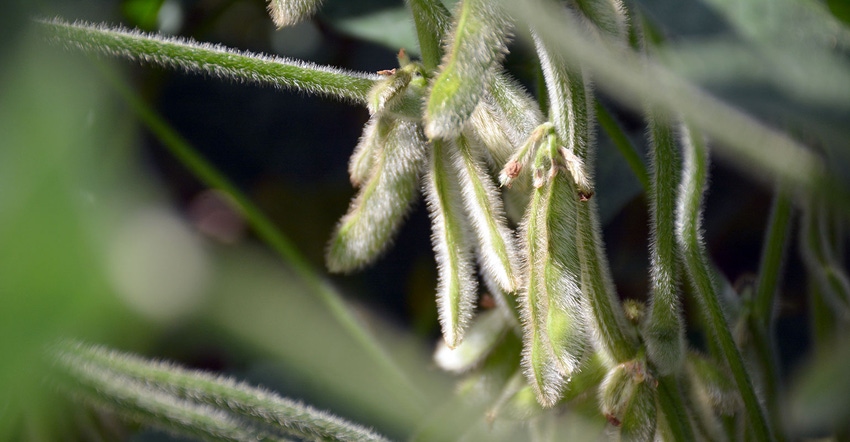
The routine may have shifted, but the work remains the same, according to the Louisiana Agricultural Consultants Association president, Blaine Viator.
Viator, an independent agricultural crop consultant, says about the only thing that has been different for him since COVID-19 is he doesn't go get his usual morning coffee from a nearby gas station. Instead, he is packing a couple of sandwiches and bottled waters and hitting the road to get to work.
"When I leave to go to work, I used to stop at the gas station and get a cup of coffee and breakfast," Viator said. "Now, every morning, I pack a lunch, go fill up my truck and ATV with gas, sanitize my hands, and go to the fields. Not much else has changed. Social distancing is easy when you are doing fieldwork and scouting on a farm."
Effects from COVID-19
As the general manager at Calvin Viator, Ph.D. and Associates in the southern part of Louisiana, Viator and the certified independent consultants at the consulting firm mainly work in sugarcane and soybeans.
"Louisiana is a hotspot for COVID-19, but it's mostly in New Orleans," he said. "We're in the rural areas, so we haven't been hit as hard with mandates since the Louisiana governor, the state Department of Agriculture as well as President Donald Trump, and USDA Secretary Sonny Perdue all have specified that anyone who supports agriculture is an essential worker.
"Generally, our consultants and scouts will be doing different tasks miles away from each other, so social distancing isn’t a challenge," he said. "As a consultant, I interact with farmers, but we stay about 6 feet apart. We're all trying to do our part.
"Many operations are also using disinfectants when changing tractors from one worker to the other. Admittedly, it is difficult for us when we meet with a grower client to not shake hands. It’s in our nature.”
Viator says dry fertilizer delivery was slowed down in some areas because some fertilizer suppliers decided to close a few of the delivery points because of COVID-19, but otherwise, most growers in the area have gotten what they need.
"We had problems getting some lime delivered, but that was before the pandemic. Barges delivering ag lime were delayed due to high water levels," he said. "Truly, we haven't seen any major impact yet in day-to-day work."
Skilled guest labor
In sugarcane, a lot of H-2A and H-2B workers are essential to work on farms and in the sugar mills.
"These are very experienced equipment operators and sugar mill technicians who work not only in the sugar mills but also on farms," Viator said. "Fortunately, most growers already had work visas in place before the pandemic, and guest workers were able to come across the border.
"Later on, things might change. The sugar mills here rely on experienced sugar chemists and engineers, many from different countries in South America. We are concerned that when it comes harvest time these specialists from other countries may be delayed for the sugarcane harvest, which normally starts at the end of September."
Not a year for experimenting
Viator said something farmers and consultants should keep in mind during this planting season is to save large-scale experimenting for another year. This year, use tried and true methods.
"We've been fortunate, for at least the time being, that sugarcane, compared to the other commodities like cotton, corn, and soybeans, has fared well recently," he said. "We had relatively good prices and good yields up until last year. Last year, we had the lowest statewide yields since 2006 in sugarcane. All crop commodities have ups and downs.
"History, economics, and supply and demand show us sugarcane will likely take a downturn in price and supply while other commodities will bounce back. The messages we have given our grower clients is to closely watch every input cost. No matter if it's $2, $4, or $10 an acre, you need to make sure you're going to get a return on your investment."
If a cultural practice or product hasn't been researched in the industry and proven to work, wait until another year to try something new on a large-scale basis.
"Instead of just going out into the field and putting down a little extra fertilizer 'just in case,' we are recommending our growers stick to the basics this year and follow soil test results closely," Viator said. "Experimenting on one or two fields is one thing, but I would not recommend it on several thousand acres. Stick to what you know works on your farm and what has proven to be effective."
Planting update
Soybean acreage in south Louisiana was about 80% planted in mid-April.
"Some areas have been unusually dry this year, so we are hoping for a little rain this weekend to make a solid stand," Viator said. "We expect, with two very mild winters in a row, to deal with above-average insect and disease pressure, especially red-banded stinkbugs. We hope we are wrong; however, early sweeps of legume winter weeds seem to point to more pest pressure. We are advising growers to take this into account with their soybean input budgets.
"Everyone involved in agriculture has an inherent talent to adapt to change, whether its extreme weather, commodity prices, input costs, or labor issues to name a few. The COVID-19 pandemic is just another issue to which we must adapt. From my perspective, everyone is adapting well."
About the Author(s)
You May Also Like




